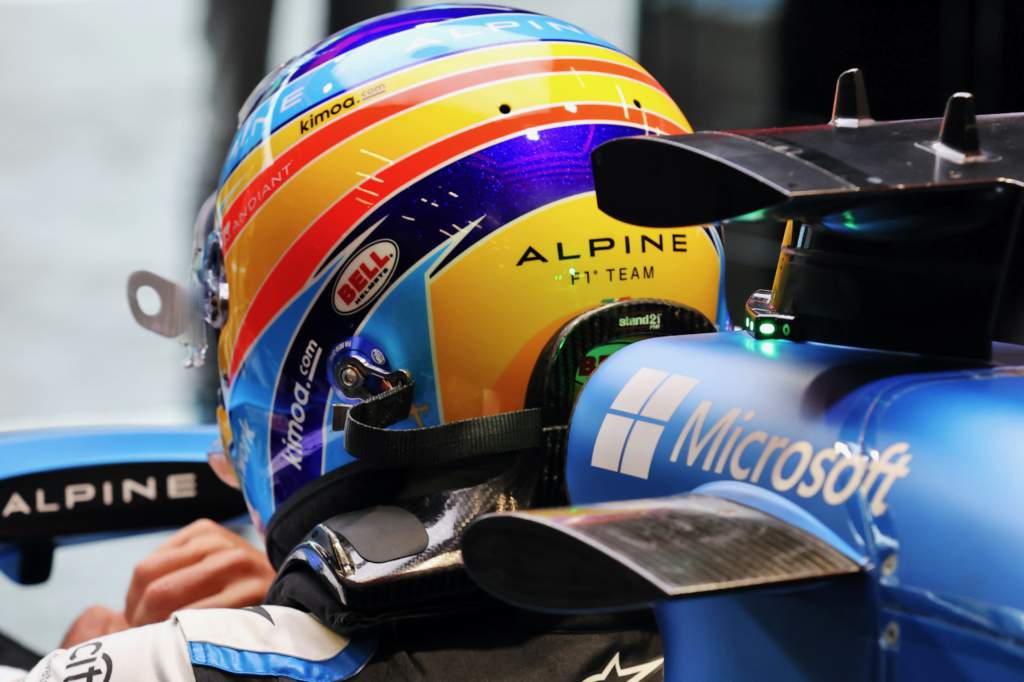Up Next

The helmet-camera run by Fernando Alonso during the Belgian Grand Prix weekend was nothing new in Formula 1 because various versions of such technology have been used in the past. But it is a reminder of a long-time weakness of the F1 television coverage.
The fundamental problem is that F1’s onboard cameras are, in terms of technology and production value, too good. It means that the visuals are so stable, so high-quality that they don’t do justice to the speed, the violence and the instability of F1 cars.
The camera that was embedded in the energy-absorbing material on the left-side of Alonso’s helmet did capture some of this, not least because the driver’s head moves around a great deal. As a result, watching the footage was a more visceral experience.
😍
No words required. #SkyF1 #BelgianGP 🇧🇪 pic.twitter.com/sio97w38UH
— Sky Sports F1 (@SkySportsF1) August 28, 2021
It was akin to what we used to see when live onboard cameras were becoming a regular part of the television coverage in the second half of the 1980s. While cameras had been attached to cars in various ways before this, the first live onboard camera – a rather obvious addition to the car – was carried by Renault driver Francois Hesnault in the 1985 European Grand Prix at the Nurbugring.
Having a camera car contributing to the live coverage soon became a regular feature, with Team Lotus driver Satoru Nakajima often carrying it in the early days. The over-the-shoulder angle became very familiar and while, in contrast to the Alonso helmet camera, it was static, it captured the energy and speed of an F1 car well. Even the imperfection of the wind rushing past added a sensory quality to it and a sense of speed.
You could see the constant steering inputs, almost feel the weight of the steering, the movement of the suspension, wince at every jolt, scrutinise the busyness of the driver as they shift up and down the gears. While some of this has been lost to the evolution of F1 cars, modern grand prix machinery demands a different kind of hustle. That was showcased at Spa by Alonso’s constant switch changes using the baffling array of dials on the wheel that don’t show up well on the conventional onboard cameras.
But what the late 1980s onboard cameras and Alonso’s helmet-cam have in common are that you can feel every bump and dip, the vibrations caused by the kerbs. While both Alonso’s camera and the conventional roll-hoop cameras do put you onboard, you need the rough edges to feel that true connection.
F1’s onboard camera technology is a marvel. Over time, more cars carried live cameras – although there were restrictions on the footage could be taken from them at any one time – and today every single car has multiple cameras available. That’s testament to the brilliant work done by F1 to develop the coverage and we should not take that for granted.
🗣️ "The closest you'll ever get to driving an F1 car!"
How about 𝘵𝘩𝘪𝘴 for a #BelgianGP camera angle 😍@AntDavidson talks through the Spa lap as we go on-board with @Alo_oficial…#SkyF1 | #F1 pic.twitter.com/5cB5cWzWpf
— Sky Sports F1 (@SkySportsF1) August 27, 2021
While the inputs from the driver are more subtle than they once were, they are still plentiful. These cars do not go round the track on rails, they are far from easy to drive and even the slowest F1 drivers are enormously skilled to do what they do. But the television coverage needs to convey this better.
The ultra-light Bell Helmets Driver’s Eye system carried by Alonso is intended to become a regular part of the F1 coverage, although remains in the experimental phase. Given it’s in a moving part – the helmet – it’s never going to become as ultra-stable as the familiar roll-hoop camera, which is a positive given it’s important that the visceral quality isn’t lost by virtue of endless improvements.
F1 cars, even today’s refined machines, are stunningly fast, raw and constantly adjusting, sliding, changing pitch and yaw. But the coverage often does not capture that, and even the familiar trackside cameras can’t capture the subtle detail that can be witnessed by those of us fortunate enough to be able to watch trackside regularly.
Alonso helmet cam is back! 😀#BelgianGP 🇧🇪 #F1 pic.twitter.com/DU6TIbRK6h
— Formula 1 (@F1) August 28, 2021
With F1 pushing to acquire new fans, anything that can be done to make the cars look jaw-droppingly difficult to drive is a positive.
The helmet-cam will be a good step should it become a regular feature, but is also a reminder that, counter-intuitively, sometimes it’s rough edges and instability that best encapsulate the raw speed and spectacle of an F1 car.




